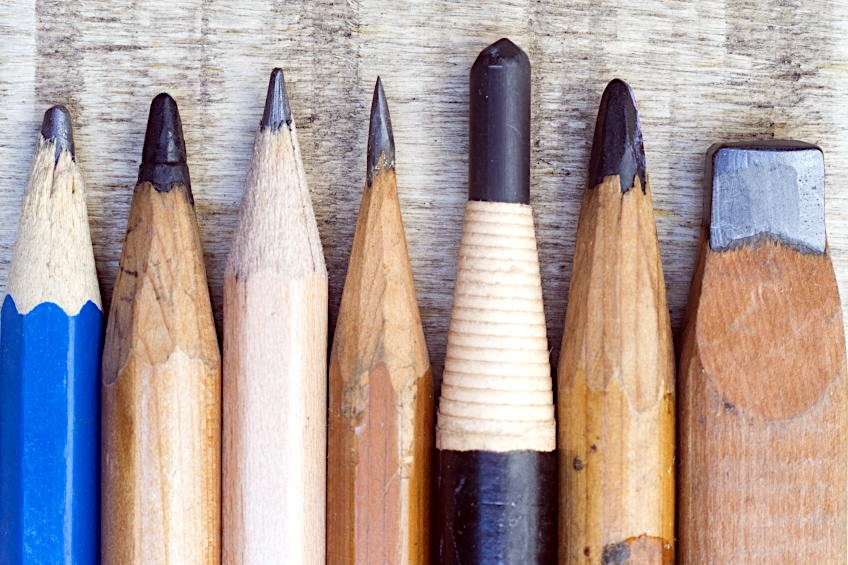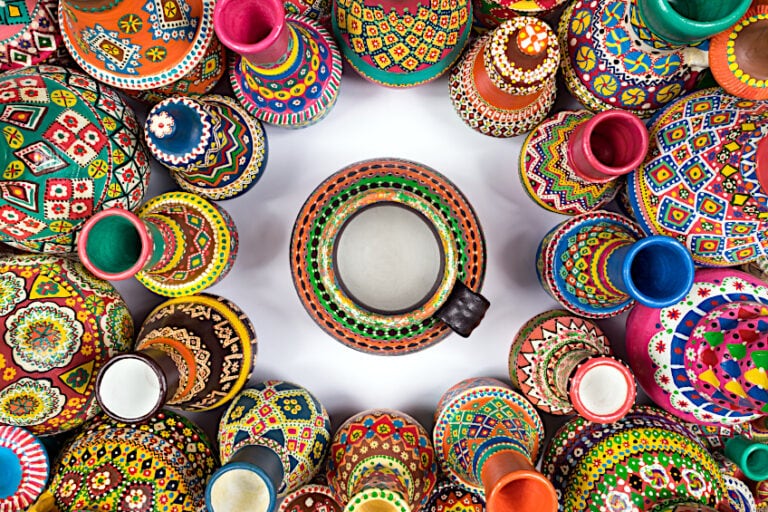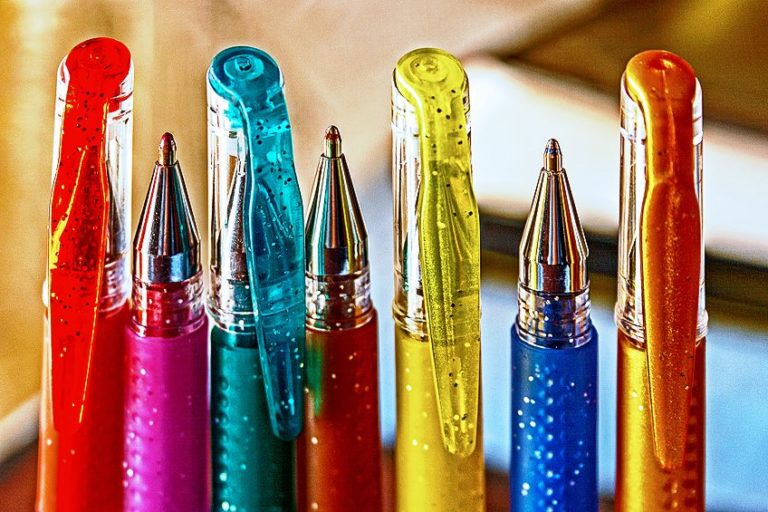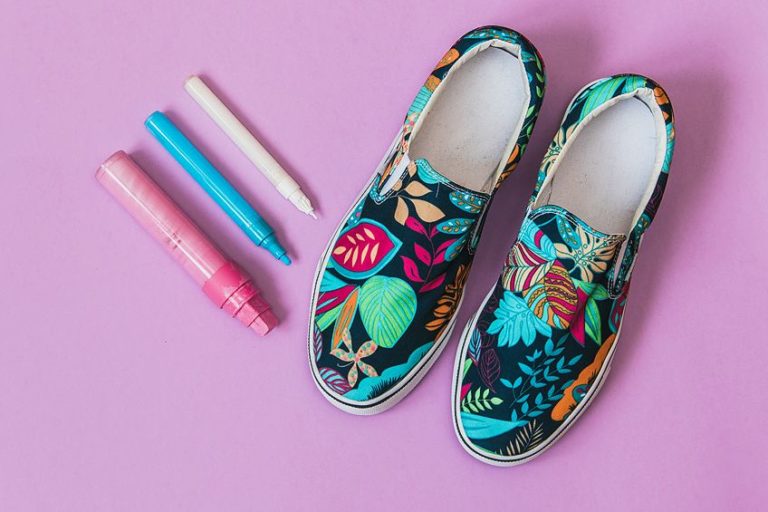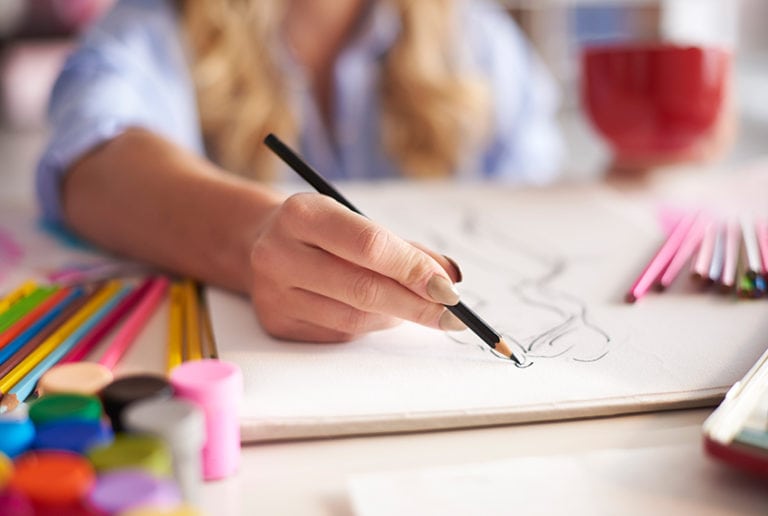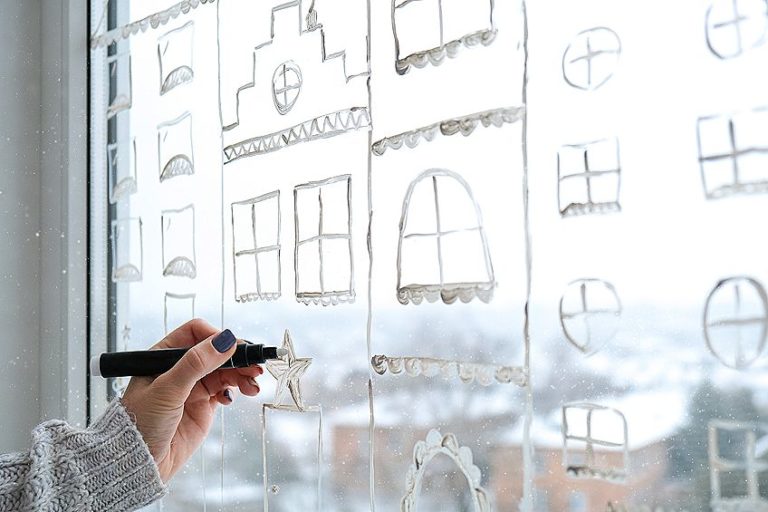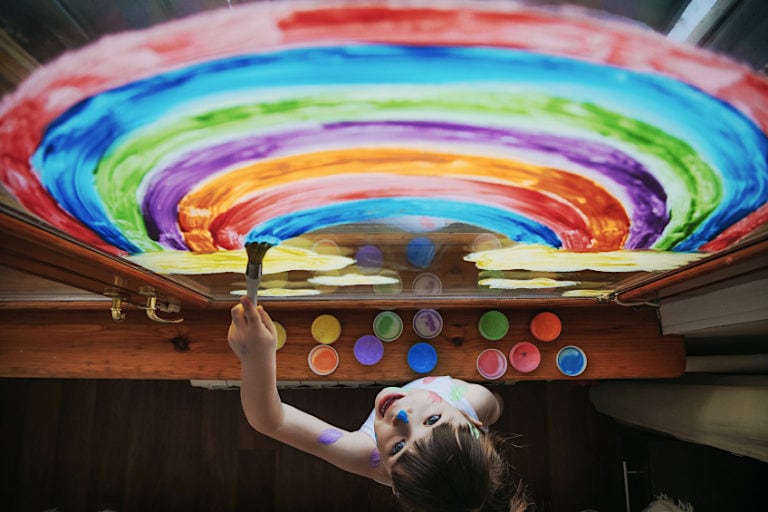Types of Pencils – Guide to Pencils for Drawing and Coloring
This post may contain affiliate links. We may earn a small commission from purchases made through them, at no additional cost to you.
Not only is the pencil a convenient writing object but a rather sophisticated writing and drawing tool that doesn’t get the praise it rightly deserves. In this article, we will discuss the different types of pencils available to you in more detail. We will learn more about the different types of pencils available and what you would use these pencils for, the various types of pencil lead, and we will answer your questions, such as “What does ‘HB’ mean on a pencil?”
Table of Contents
The Humble Pencil
It is widely believed that the pencil was invented by Nicholas-Jacques Conté, a scientist who served in the army with Napoleon Bonaparte in the 17th century. A pencil is a tool that is used to write with. Usually, writing or drawing using a pencil will be done on paper, it is easy to see that a pencil was used because of its gray color. Most types of pencils have a wooden outer covering with a thin rod inside. The thin rod is made up of graphite, which in simple terms means this is the substance that remains behind on a piece of paper or wood that you are sketching on.
Pencils that are made from wood can be sharpened with a steel blade, and as more use is made of the pencil, it is eventually disposed of as the entire pencil reduces as it is being used and sharpened.

What’s in a Pencil?
There are various types of pencil lead. The inside of a pencil or the core of a pencil, though commonly called “lead”, is a non-toxic material called graphite. This is a powder form of graphite and clay that has been mixed.
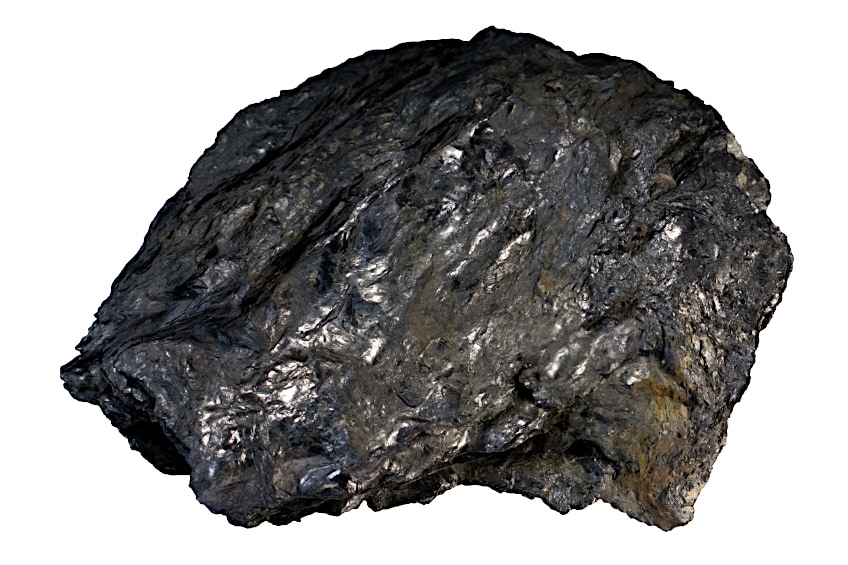
The Different Types of Pencils
There are so many different types of pencils available to consumers that when exploring the pencil world, it can be mind-boggling to know which pencil is the correct type for your project. If the incorrect type of pencil is used, the end product being sought for a drawing will not be what you imagined.
We will explore in more detail the meaning behind the different types of pencils, such as graphite, solid graphite, liquid graphite, charcoal, carbon, grease, and water-colored pencils, and we will also discuss what types of pencils are available for different applications.
| Pencil Type | Use |
| Graphite | Drawing and sketching |
| Solid Graphite | Drawing |
| Liquid Graphite | Sketching |
| Charcoal | Writing and sketching |
| Carbon | Blending |
| Grease | Marking |
| Watercolor | Blending and painting |
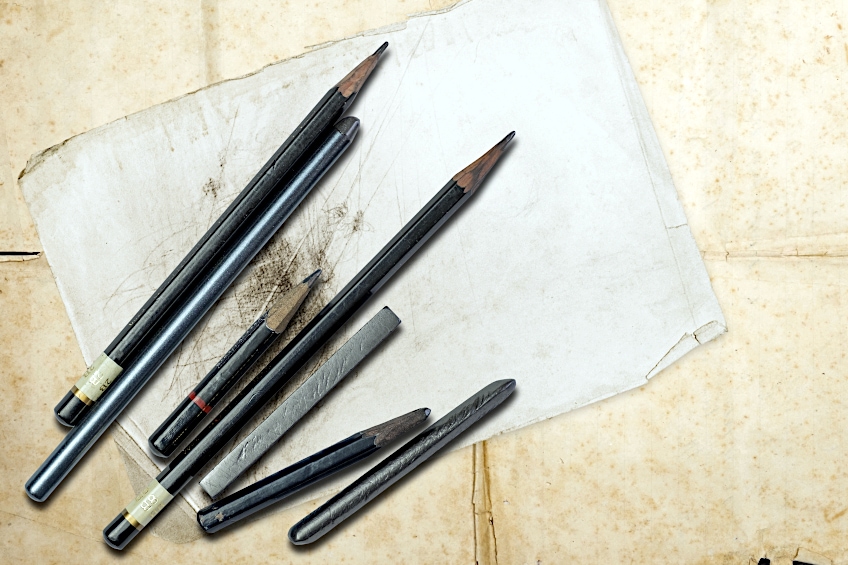
Once you have a better understanding of the graphite in a pencil, you will be able to work towards buying the best pencil type for the drawing that you want to achieve. There are many sketching and coloring pencil types to choose from. Just as you find artists who enjoy painting with different paints, so will we find that different pencil types offer different effects for those who use them.
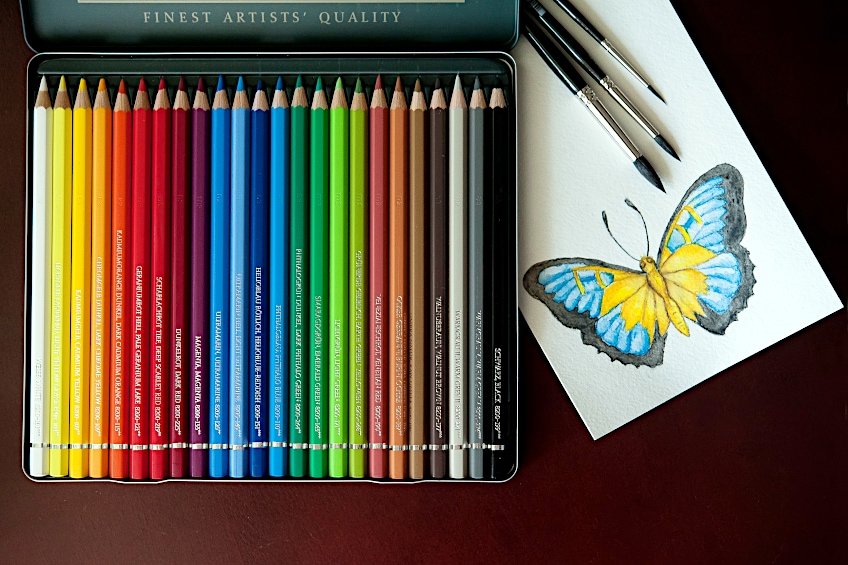
What does “HB” mean on a pencil?
When using a pencil marked only with an H, expect the pencil to be hard, thus leaving less graphite on the paper. Therefore, with less graphite, the drawing will be much lighter. B pencils are much softer than the H and will naturally leave more graphite on the paper which in turn, when drawing, the color of your pencil lines will be darker.
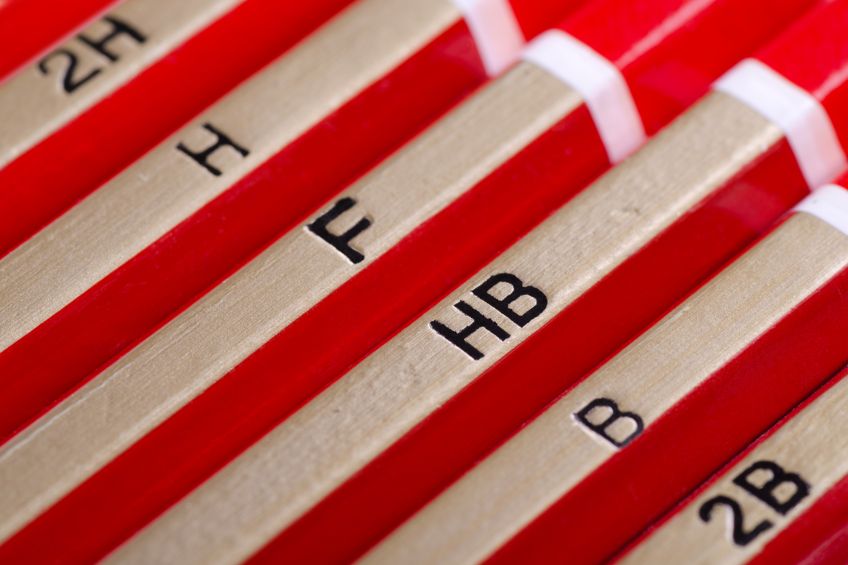
Seeing an F on a pencil means that it has a very fine point. This type of pencil is quite hard and is generally considered to be too hard for drawing purposes. It is therefore safe to say that the more H’s that appear on the side of the pencil type, the harder the pencil will be. For instance, a 4H pencil will be much lighter and a lot harder than a 2H pencil. The 9H pencil is both the hardest and lightest pencil type that you will find.
The ever-popular HB pencil is ideal for drawing as the graphite falls in the middle of the light and dark and soft and hard scale. When looking for a softer pencil, look out for the one that indicates more B’s, as not only is it softer, but it is also quite dark. The 9 XXB pencil is the softest and darkest pencil that you will find on the market today.
Drawing Pencils
B, HB, and F are the types of pencils that are best suited for drawing as they are more relaxed. Softer B pencils can be used for children who are just learning how to write or draw and is usually the type of pencil most beginners start with when looking at types of drawing pencils.
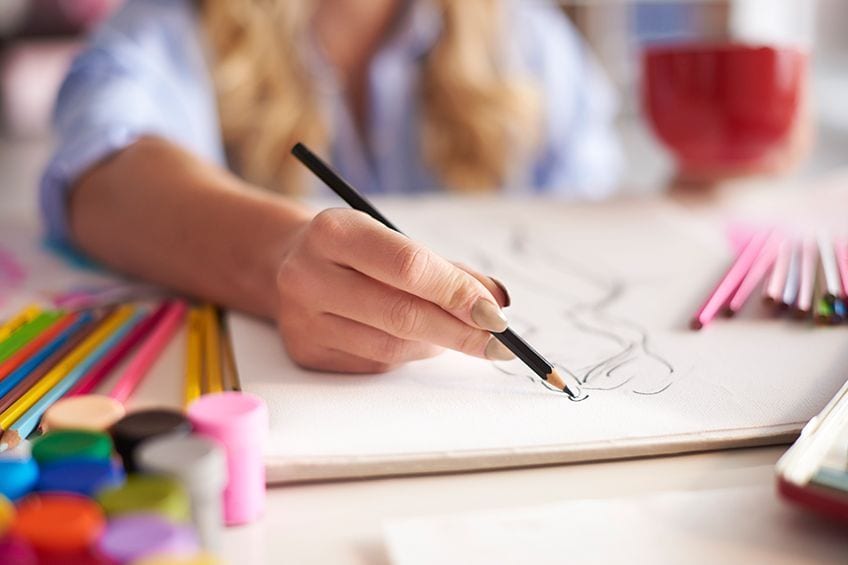
The more advanced artist will look for a pencil with a medium degree of hardness which is of course the HB. The HB is one of the best sketching pencil types on the market. Those artists who want to express more feelings in a sketch will most likely choose Grade 2B to 8B, which will help to add contrast to the drawing.
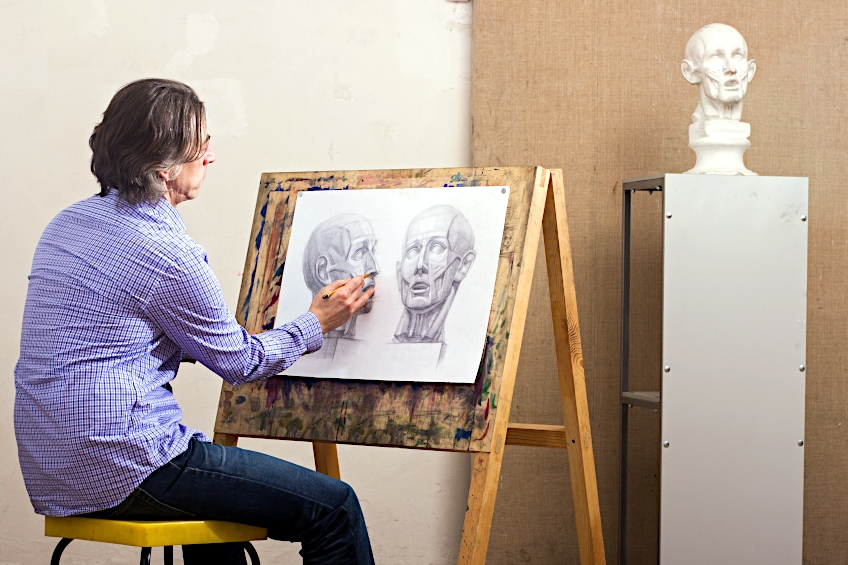
When undertaking the art of technical drawings, using a hard type of pencil should be considered. Grades H, 2H, and 6H are excellent types of drawing pencils as the lines are usually more gray than black and less prone to smudging. It should be noted, however, that the downward pressure onto the paper should not be too hard as it may cause pressure marks on the paper.
Sketching Pencils
The best types of pencils for sketching would be the HB, the 2B, 6B, and even the 9B. The harder the pencil type, the lighter the drawing, and the softer the pencil type, the darker the drawing will be.
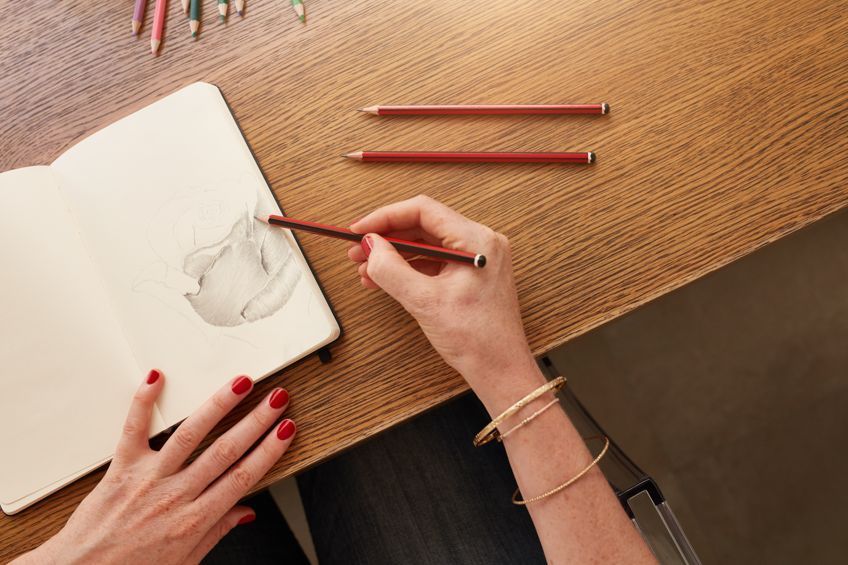
To start sketching, the number one rule is that practice makes perfect, and before starting, it is recommended that you know your tools, and that means knowing what type of pencil you will need and the type of paper you will be working on. Always start your sketch by using larger shapes and remember that the finer details come later.
Learn how to hold your pencil at different angles so that different techniques can be applied.
Graphite Pencils
Graphite is a form of pure carbon. The graphite pencil is the ideal pencil that should be used for drawing and sketching purposes. The graphite pencil is easily identified in the shop by looking at the description of the pencil. It is marked typically with an H or B, and sometimes both of these letters could appear.
The H abbreviation indicates the hardness of the graphite, and the B indicates the black tone of the graphite in the pencil.
Solid Graphite Pencils
The types of pencils used mainly for drawing are what we call solid graphite pencils, however, another name for this is a woodless pencil. This means that a solid graphite pencil does not have wood covering it.
Liquid Graphite Pencils
Using this pencil type allows the drawer to create their sketches easily. The most popular type of liquid pencil is called Derivan. It is available in various shades, such as gray, red, blue, and yellow. You will require a brush to apply the liquid pencil onto the paper.
Charcoal Pencils
This type of pencil is available in different styles. There are rich tones and different contrasts with charcoal pencils. This type of pencil is ideal for writing, as it is easy to erase off the paper if you make mistakes. Famous artists such as Michelangelo and Leonardo da Vinci used charcoal as a preferred choice for their creative masterpieces.
The charcoal pencil is available in different styles, such as wood or paper.
Carbon Pencils
This type of pencil is a combination of both charcoal and graphite. This pencil type allows the artist to add blending techniques to the drawing as well as add texture at the same time. The carbon pencil is a type of pencil that is very smooth and soft, however, it can leave thick lines that can prove difficult to remove.
The carbon pencil is a much smoother type of pencil than the graphite pencil.
Grease Pencils
This is a type of pencil that is made up of hardened colored wax. When wanting to mark glossy or non-porous items such as plastic, the grease pencil works remarkably well. This type of pencil is often found in laboratories where glassware can be labeled. Handymen and plumbers also use it as a marking tool in construction.
Watercolor Pencils
These types of pencils are well known as water-soluble pencils. When drawing, to achieve a beautiful watercolor effect, just add a little water to the pencil. This type of pencil can also be used as a regular pencil. When using this technique, the colors can be blended very easily.
Creating Art With a Pencil
Knowing the fundamentals of the different types of pencils is key before diving into drawing or sketching. It is always a good idea to know what tools are required for the desired end product that is wanted to be achieved.
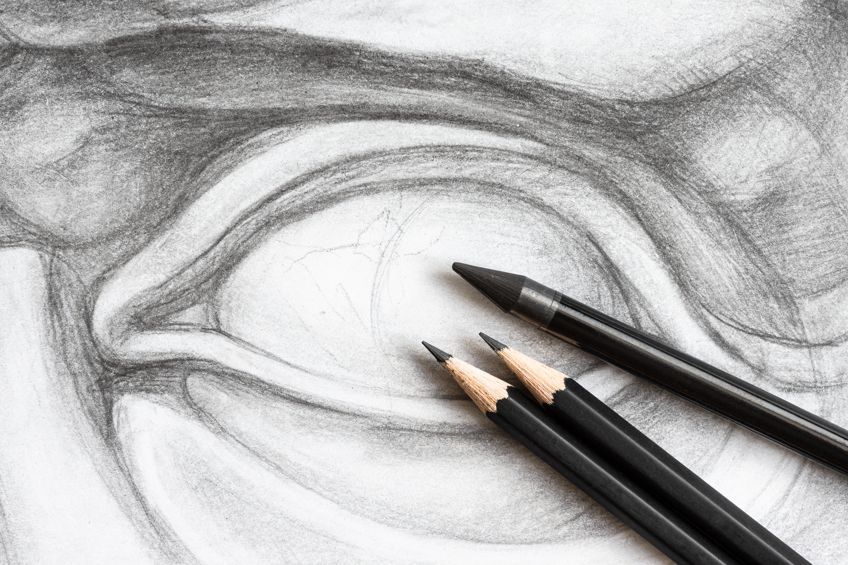
Learning basic drawing techniques can be self-taught if the correct type of pencil is used. Putting pencil to paper is one of the easiest forms of art to master. It is very portable, does not create a lot of mess, and is the ideal tool to introduce to young children who want to start experimenting in the world of art.
Using different types of pencils will enhance your drawing skills. The pencil is not just a tool to use for sketching. Thousands of detailed portraits have also been produced with the right type of pencil.
Blending
To start creating a blended technique with a pencil, much practice will be required to get to the masterpiece that is desired. The smoothness of the blend will automatically depend on how smoothly you apply the pencil to the paper. The trick to blending is not to scribble, as it can be challenging to erase harsh lines.
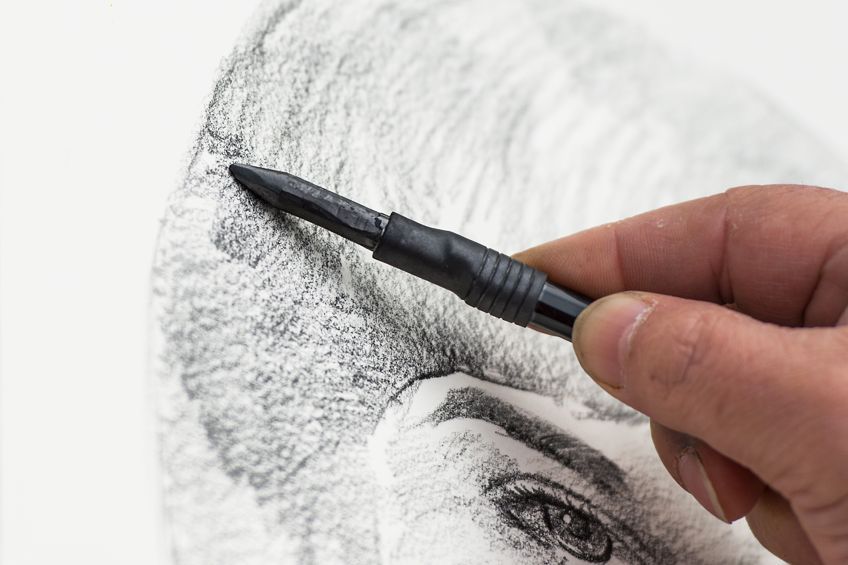
When blending, solid lines should be barely visible, and it is recommended that blending is worked from dark to light, using the up and down motion as well as moving your hand from right to left. Do not press down hard as the blending motion is undertaken because the pencil could roughen the paper. The lighter you hold the pencil, the smoother the blend will be.
You can buy expensive blending tools for drawing, but you can also make your own.
Shading
Different light falling on the drawing will affect the overall finished product, so it is important to start using soft shading and work towards darker shading. If a solid foundation is not set out on a drawing, the drawing will look flat. Creating a picture that stands out is achieved by using light and shadow.
Casting Shadows
This is where a drawing of an object will cast a shadow onto a surface. The shadow will be the darkest part of a drawing. Imagine your shadow when standing in the sunlight, it is always often a very dark shade, and so too should your shadow be in your drawings when using various types of pencils. When trying to incorporate shadows into drawings, they should almost touch the main object that you are drawing.
Remember, however, that they will be drawn at an angle as opposed to standing upright.
Tone and Halftone
The word halftone indicates that this is the true color of the object you are drawing which is unaffected by light and has no shadow. A great way to add depth to a drawing is to play with the different tones created by different types of pencils, and this can be done in the background of a drawing. A darker background tone will automatically affect the look of a lighter object that you are trying to portray.
Alternately if the object is drawn straight onto a white piece of paper, the edges of the object will look completely different.
Hard and Soft Edges
There are two very distinct types when it comes to edges, they either are hard or soft. The hard edges can be found when two surfaces touch or overlap each other, such as a vase on a table. The edges will be clearly defined as you should be able to see when the object stops. Soft edges are usually found when two objects blend, this will be a gradual change of tone.
The Right Pencil for the Right Job
All the different types of pencils that fall into the B category contain much darker lines than compared to the H and F. If mistakes are made, they can easily be corrected with an eraser. The B pencil type is often used when sketching and doodling. Some people also use the B type of pencil to take notes.
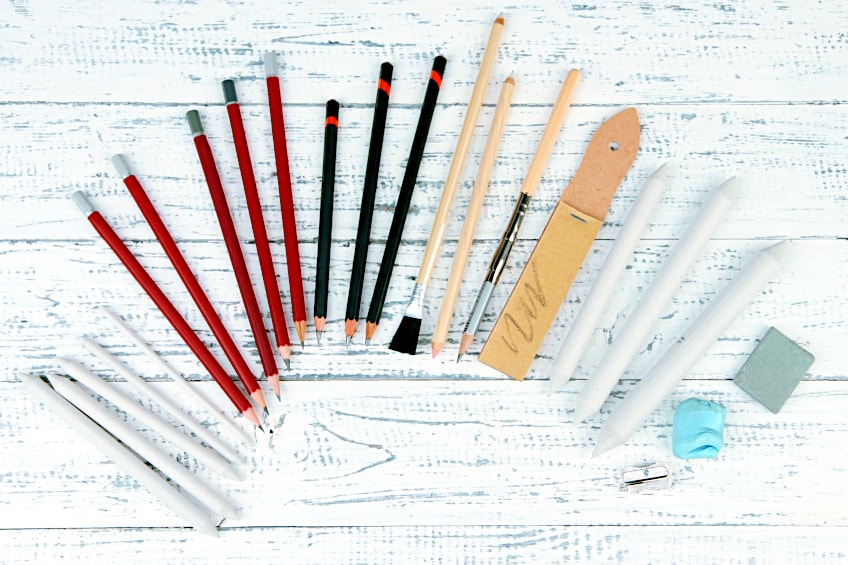
The 8B pencil type of pencil is a very dark choice and is used predominantly for drawing purposes. The 8B pencil will make very dark lines on paper, causing the sketch to stand out when looking at the picture. With almost the same tone as the 8B, the 7B pencil is also very popular in the art world as it gives off a nice rich dark gray color onto the paper.
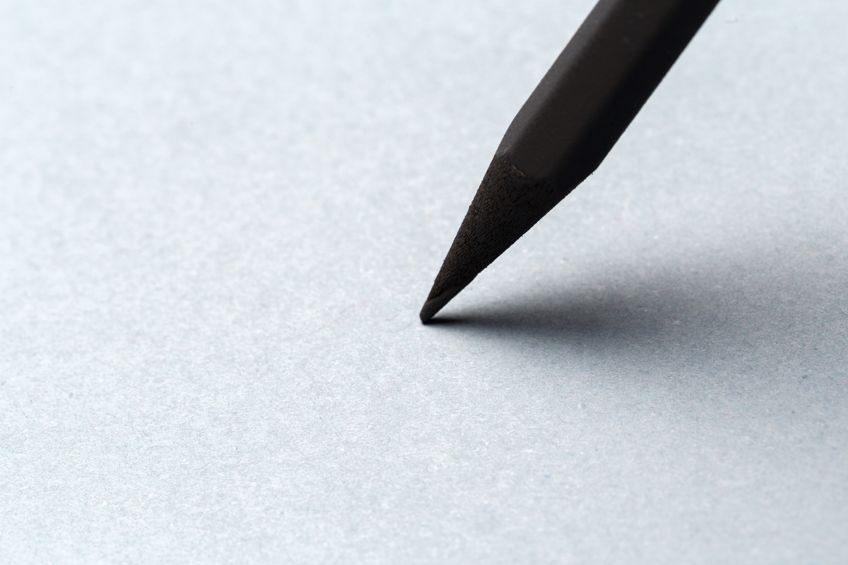
The 6B type of pencil is probably the best pencil to use when drawing as it adds darkness to your artwork. Most portrait artists will use this pencil type as it is easier to make skin and fabrics in a picture come alive. 3B pencil types lean more towards a lighter tone of gray and would be the ideal choice for those who want to add light values to their drawing. The 2B pencil works well for medium to darker shading on the paper.
It adds tone from light to dark and is one of the more commonly used pencils for sketching or drawing and, more importantly, shading.
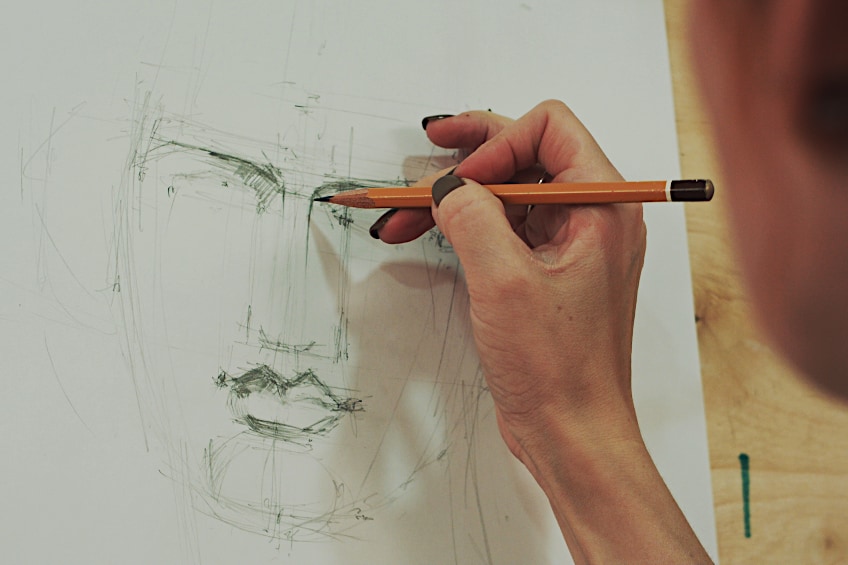
The reason the HB pencil is so popular is that it falls in the direct middle of the pencil lead scale. The pencil is quite hard, and it may be a little challenging when trying to draw with it. The H on the pencil denotes the hardness, and the B indicates the blankness. Seeing an F on a pencil means the point is finer than on other pencils.
This type of pencil is a bit harder than the other types of pencils, and you may find it too dark when drawing pictures.
Making a Pencil Swatch
Sometimes just talking about the different pencil types can seem daunting to the young artist who is starting their drawing journey, and it may make more sense to follow the easy points below to assist you when choosing what types of pencils should use for different drawings. By creating a pencil swatch, you can clearly show which pencil type to use.
This is particularly useful for finding which pencils will create a truly dark tone, and which will create a reflective surface.
When going to your local art supply store to buy different types of pencils, you will be able to refer to the swatch as a good reference guide because, at a glance, you will be able to see if the pencil type chosen is dark or light, soft or hard, shiny or light absorbent.
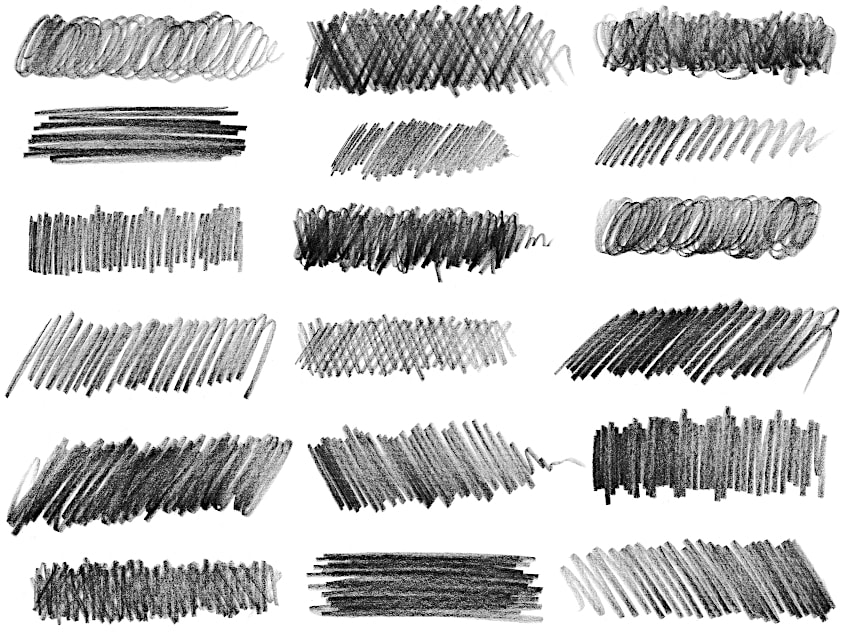
Creating your swatch is easy! Organize the pencils that you want to test from hardest to softest, that means from the H to the B’s, and then one by one, color in a small area in a grid type of format. Once you have purchased the type of pencils that you will need, as you add more pencils to your collection, you can add more testing lines to your swatch.
The swatch chart is just another name for a cheat sheet, but by doing this simple exercise, you will be able to know at a glance what is the best type of pencil to use for shading or sketching, writing, as well as drawing.
Some Interesting Facts About Pencils
- On average, a long pencil directly from the factory can write about 45,000 words and draw lines that total 35 miles.
- Cutting down one tree can yield up to 30,000 pencils.
- Even though we all refer to the middle of the pencil as lead, it does not contain any traces of lead. The center of the pencil is a mixture of graphite and clay.
- China alone produces over 10 billion pencils per year, this makes up more than half of the pencils that are available throughout the world today.
The basic gray pencil is most likely the first type of pencil that was placed into our hands at a very young age to teach us how to write and draw. Not only did many of us draw our very first picture with some type of pencil, but we also learned how to write our names with it. Over time and as we got older, we soon learned that there were different types of pencils for different purposes. The little gray pencil certainly has evolved through the centuries and because of its versatility and functionality, will most likely never cease to exist.
Frequently Asked Questions
What’s in a Pencil?
The inside of a pencil is commonly known as lead; however, this is not a true description as it is not a substance made from lead but is a form of carbon mixed with clay and is called graphite. Contrary to popular belief, you can’t get lead poisoning from a lead pencil.
What Is a Shading Pencil?
The softer B pencils are considered to be the best type of pencil to use for shading. However, don’t write off the harder H pencils completely. Delicate and lightly shaded drawings are normally achieved by using the pencil types HB and H.
Is My Eyeliner Pencil Safe to Use on My Eyes?
Yes, eyeliner is very safe to use near the eyes as it was created for this purpose. One should only use pencils designed to be used as makeup near your eyes because they do not contain any toxic dyes. Eyeliner colors are widely available, so you should never feel the need to reach for your art pencils for this purpose!
Larissa Meyer is a 32-year-old mother from Michigan and creative spirit since childhood. Her passion for painting and drawing has led her to an education as an illustrator and a career as a freelance graphic designer. She has a Bachelor of Fine Arts in Illustration and a degree in Graphic Design. Larissa is a talented artist who is able to master a wide range of styles and techniques to bring her artistic vision to life. Her greatest passion is currently fluid painting and epoxy resin art. Larissa’s love for art and her knowledge and experience in illustration make her the perfect Creative Director for our fluid-painting.com team. She is the creative head of our team and shares her passion and knowledge with our community through articles and tutorials.
As a mother of a 2-year-old daughter, Larissa also understands the importance of fostering creativity in early childhood. She uses her experience and knowledge to help other parents inspire their children and develop their artistic skills as well.
Learn more about Larissa Meyer and about us.

